When pavement ends outside of Dease Lake and a 112-kilometres (70 miles) of steep and narrow gravel roads begins, so too does our adventure. We are headed back in time to historic Telegraph Creek, British Columbia. But the discoveries, as we would soon see, were so much more than just driving the road.
Disclosure: This post contains Affiliate links.
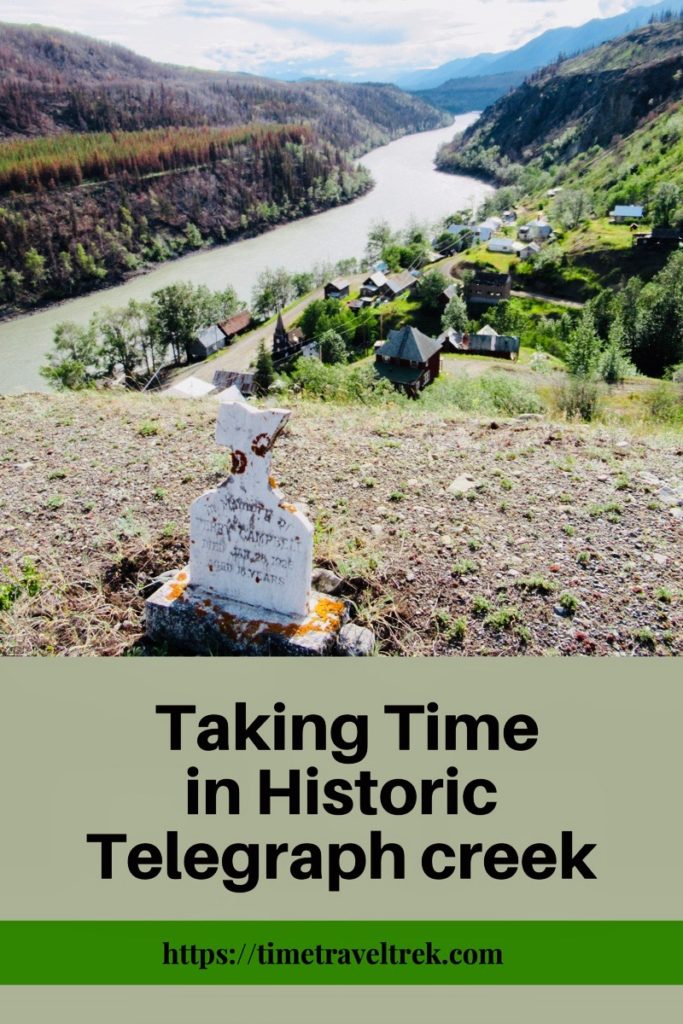
Table of Contents
Drive with Care
The sign says it all: “For next 70 km, Steep Mountain Highway, Grades up to 20%.”
Let’s go.
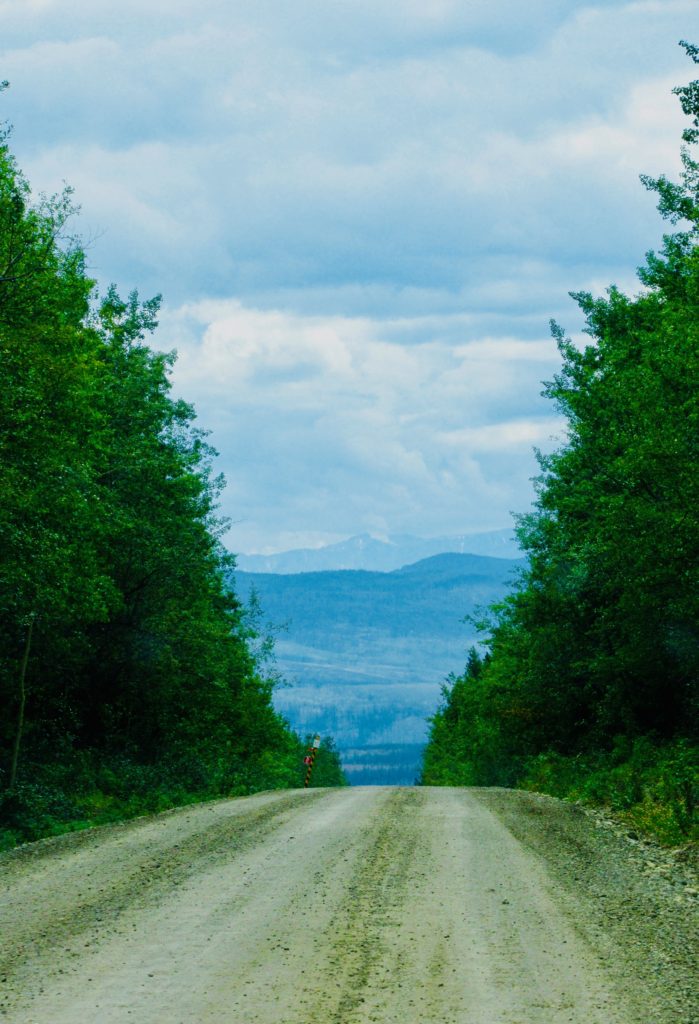
The road narrows after the first of many single lane bridges. This one crosses Tatcho Creek. Another crosses Auguschidle Creek – that one made me giggle. We follow alongside the clear Tanzilla River.
“Looks like a good fishing stream,” Brad pipes up.
“How about on the way back?” I reply. We have so much to see along this scenic corridor which follows a First Nations trading route and the path of early gold prospectors, not to mention visiting historic Telegraph Creek and the ghost town of Glenora.
Moosehorn Swamp and Caribou Camp pass by before we reach the Stikine Provincial Park boundary. Our journey through the area is just a few weeks shy of the one-year anniversary of the massive forest fire that raged through the valley starting in August of 2018. It is heart-breaking to see the extent of the fire – from valley bottom to mountain top and stretching almost from the park boundary to the other side of Telegraph Creek.
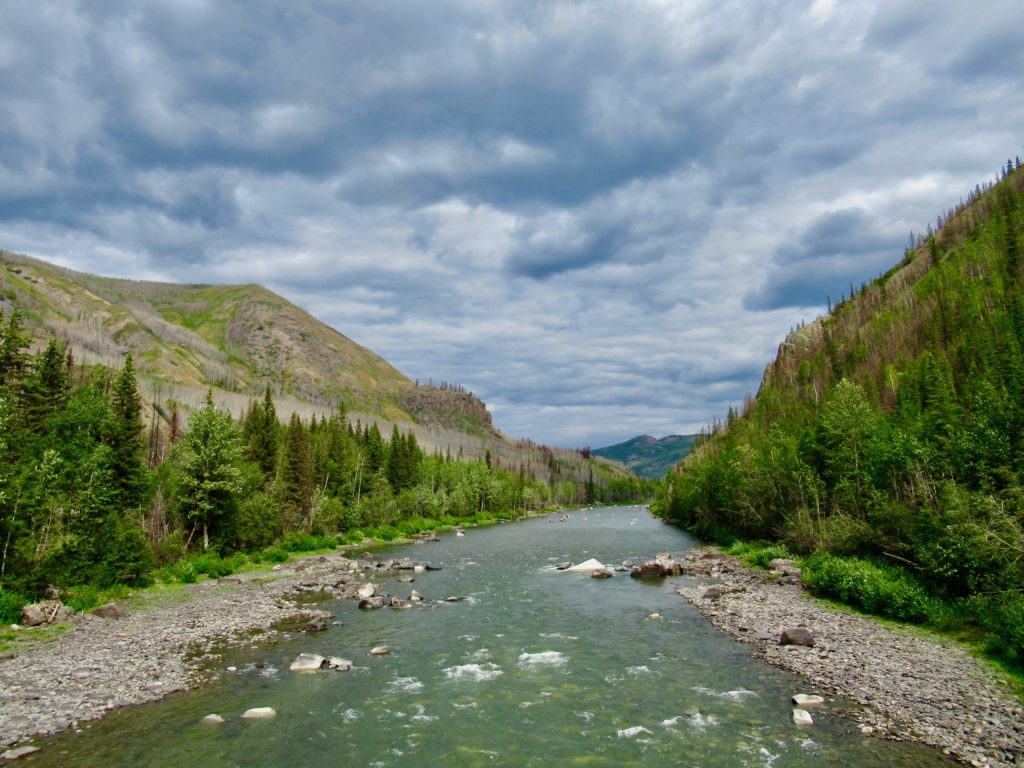
Fireweed blooms today and there is a promise of rebirth. It always amazes me how quickly nature starts the healing process.
Tahltan Territory
The road passes through Tahltan Territory. Indigenous fish camps are seen along the way with the first at the confluence of the Tahltan and Stikine Rivers. Tahltan First Nation people have lived in this area for generations. Today, they continue the tradition of harvesting salmon from the Stikine.
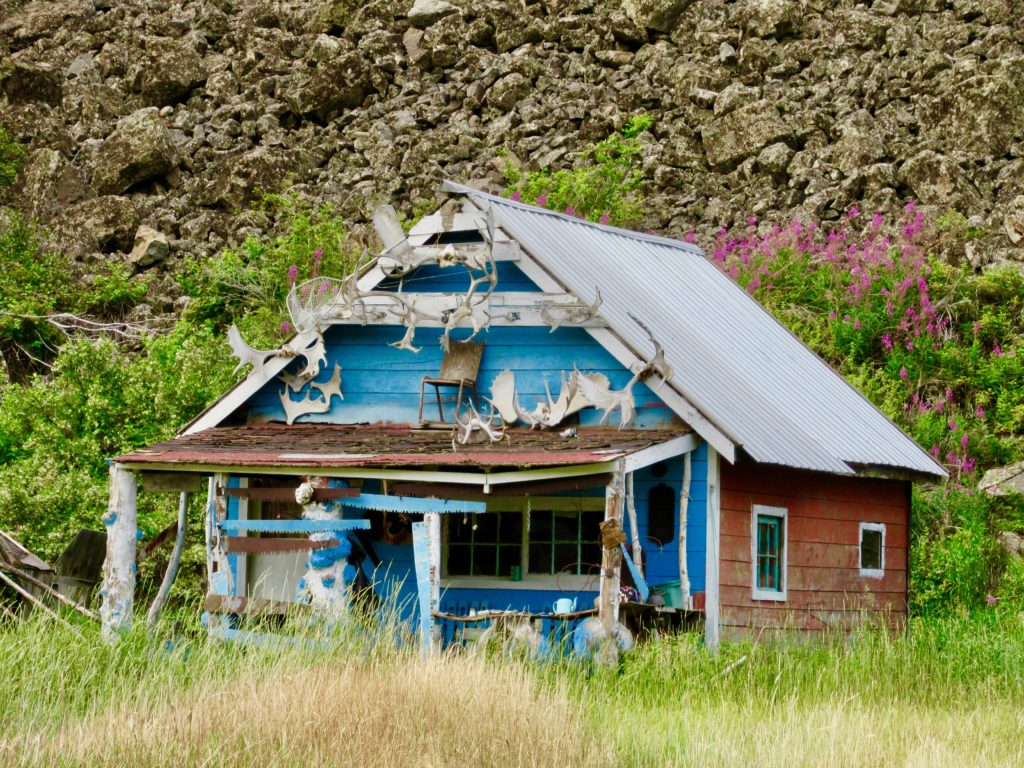
There is an unusual rock formation on the opposite bank of the confluence. It looks like the outline of an eagle or an owl. Actually, the art in stone was created by the volcanic processes that shaped the landscape.
Grand Canyon of the Stikine
The road climbs up impossibly high above the Stikine River and follows it through what is known as the “Grand Canyon of the Stikine.” If the clouds would lift, we might see the volcanic landscape surrounding Mount Ediziza. Travel is slow, mostly due to urgent calls of “STOP! I need to take a photo.”
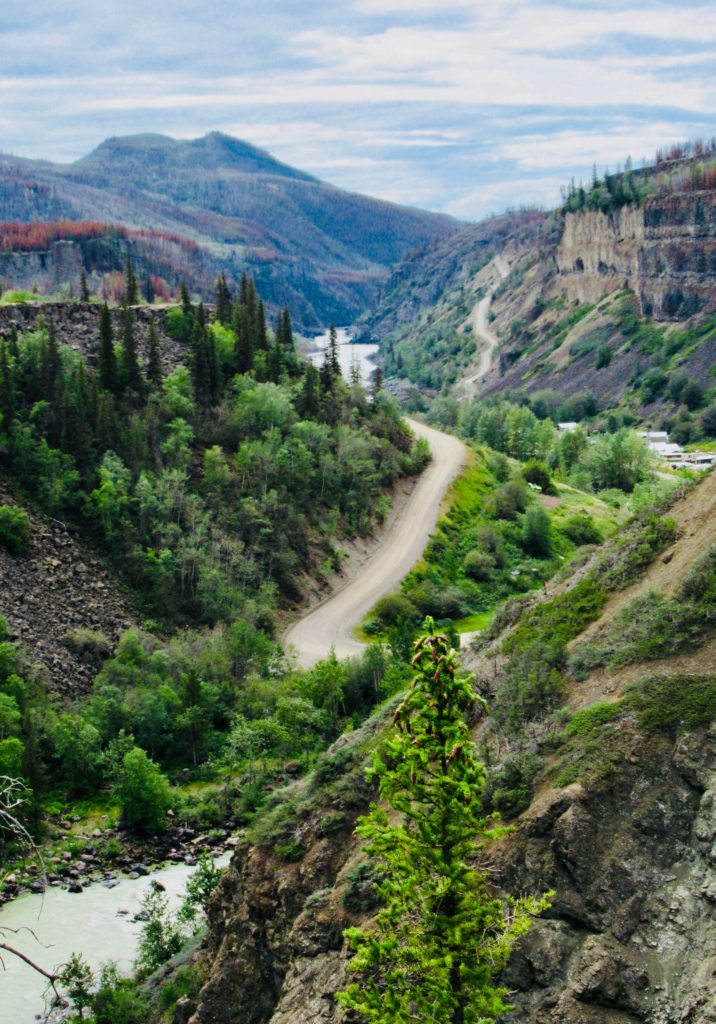
We pass by the gravel airstrip and diesel-run generators that provide power for the town before snaking through the 1970s-era homes, crossing tiny Telegraph Creek itself. Off to the left, a narrow dirt road is closed with signs for a “wash out”. We crest out on another terrace of homes, government offices, and a small gas station/store.
Fire licked the doorsteps of many of the structures, but thankfully the majority were saved. We drove through the small collection of buildings wondering where we would see historic buildings. I’m a little… no… make that a lot, dismayed. This is not what I was expecting of historic Telegraph Creek.
The Ghost Town of Glenora
Making the best of it, we thought we’d continue on a few more kilometres to Glenora – site of a goldmining camp that saw upwards of 5,000 people. Scorched trees have been cleared of the roadside right-of-way and lined up in near piles. It feels like we are travelling through the edges of a logging cut block. Spirits start to plummet. As quickly as the fire starts it ends and we are back in green glory of aspens and spruce.
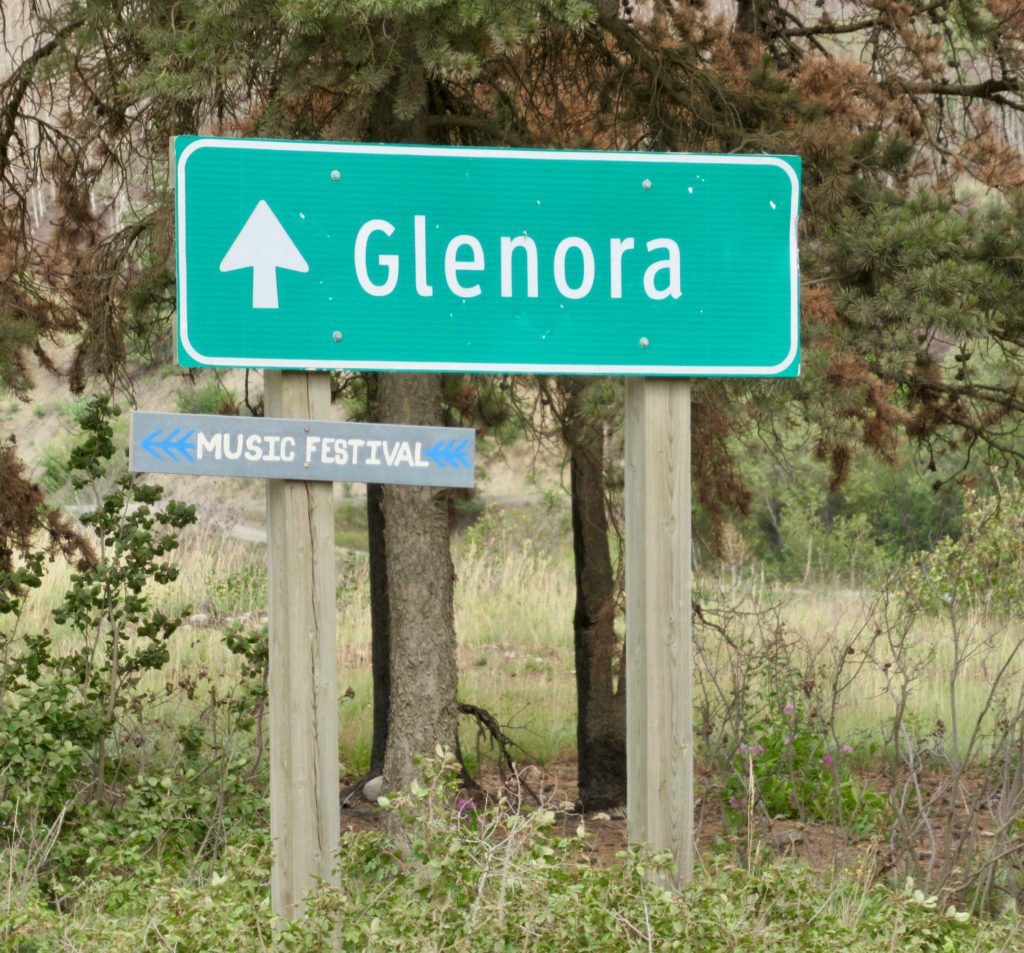
Glenora… hmmm… I’m not sure why tourist brochures and mapbooks still have it listed as a place to visit. Any historic remains are long gone and the flats are now a thriving fish camp full of pickup trucks, trailers, tents and more permanent wooden buildings. We’ve struck out… again.
It is looking like a long scenic drive along a rainbow of rivers with no historic pot of gold at the end. Driving back on our way out of town, Brad notices the narrow road by the creek is now open… or at least the signs are laid flat.
“Maybe that’s the way to old town?” he queried. Down the thickly wooded, narrow gully, we creep past a recently repaired road washout, avoiding orange pylons marking areas yet to be fixed. Rounding a red basalt cliff on the corner, there it is. We found our pot of gold!
Historic Telegrah Creek
Telegraph Creek started as a Tahltan settlement. It became an important transportation and communication centre during gold rushes in the 1860s and 1870s. In the 1860s, the Collins Overland Telegraph line crossed the Stikine River here at… wait for it… Telegraph Creek.
The Yukon Telegraph followed a similar route to the abandoned Collins project. Remnants of the telegraph line and bits and pieces of the service cabins dotting the route can still be found.
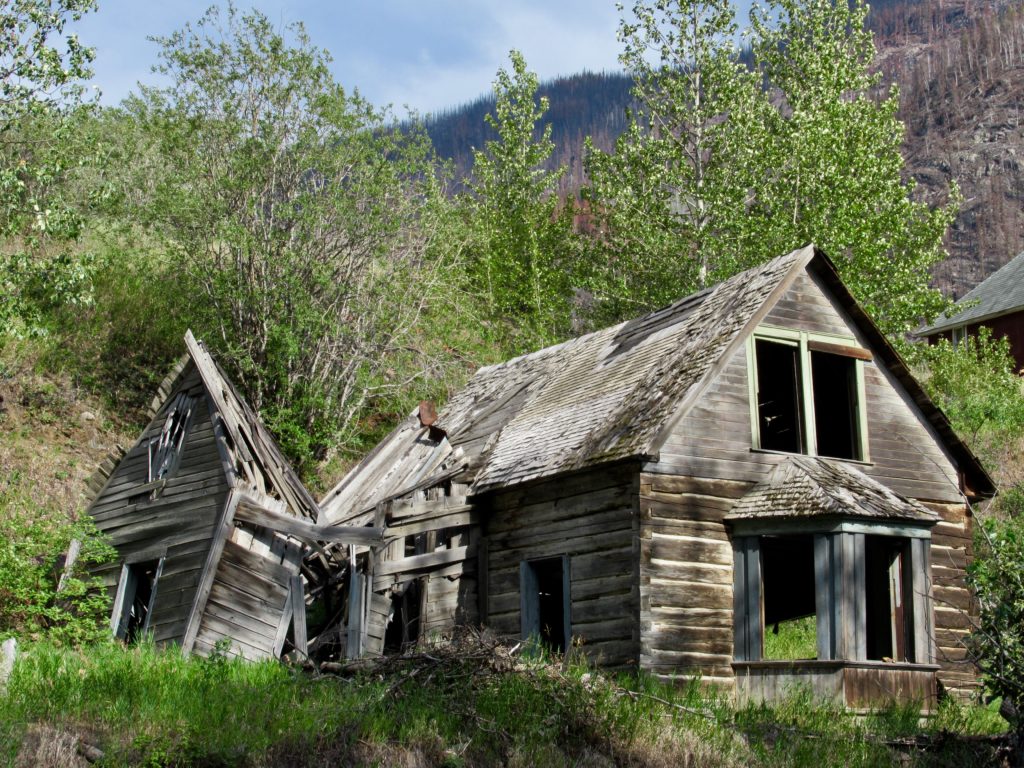
As we drove slowly downhill into town that lies on a series of small benches above the Stikine River, remains of a weathered log cabin struggle to remain a recognizable structure on the right. We cross the bridge. Another, more modern, two-storey building still has pieces of glass in windows leading into a hollow shell. Two more small cabins on the left, one with a satellite dish. Several buildings tier on the right. At the T-junction, we see a sign point left for the Stikine Museum. Seem like a good place to start.
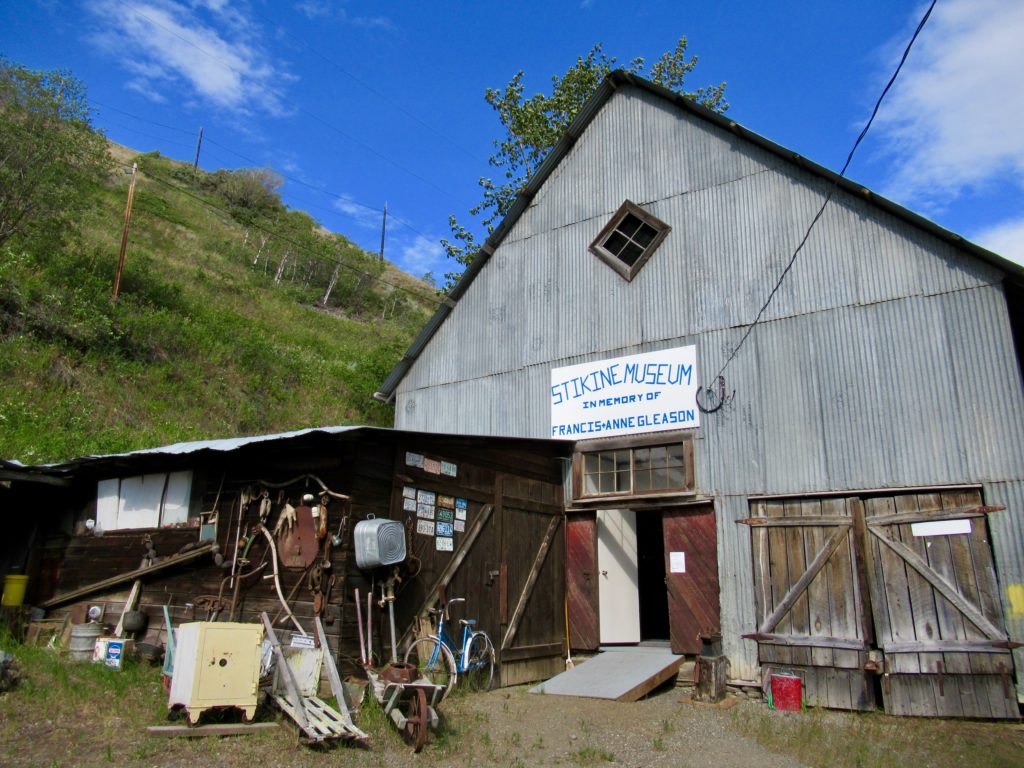
Stikine Museum
Parking the truck outside of the church, we stroll above the riverside dock to an old warehouse at the end of the dusty road. A young boy comes out of the buildings and asks, “are you wanting to see the museum?”
“Yes, we are. Are you going to open it for us?”
He nods.
“Do you live here year-round?” I ask, curious to know what life would be like in this small dot on the map in the heart of winter.
“I wish,” he replies. “I’m just visiting my grandpa.”
As if on cue, a man carrying a coffee cup saunters up.
The boy grabs the register book, asks us to sign and then starts talking to his grandad.
“Can I drive the quad now?”
“Okay, but only for half an hour.”
With a nod to us, he’s off and running and we get our first glimpse of historic Telegraph Creek’s Stikine Museum.

(Photo: Megan Kopp)
Long-time resident and business-owner Mickey Ferguson – aka Grandad – opened the Stikine Museum in June of 2018. In August, the fire hit. It was not the spark for tourism he had hoped for, but visitation is slowly going up. Entrance is by donation, so we grab some cash and wander in.
On the right is a memorial of photos, dedicated Francis and Ann Gleason, Mickey’s in-laws. For years, Francis collected historic artifacts, many from around Telegraph Creek. He always planned to open a museum. After he was gone, Mickey turned the dream into a reality. He added over 200 photographs sifted from the Royal BC Museum archives to help tell the village’s story.
Photos Frame the Past
Historic Telegraph Creek became a transportation hub in the late 1800s and early 1900s. Canoes, powered riverboats and even paddlewheelers plied the mighty Stikine with goods and passengers. One wall of photos highlights the vessels and captains who made the treacherous and long journey from the coast.
Another section focuses on the telegraph line. A collection of historic insulators are lined up and 100-year-old leather saddles rest below. Mickey leans on a glass case filled with Tahltan wood and bone tools. Large pieces of knapped obsidian rest beside the tools.
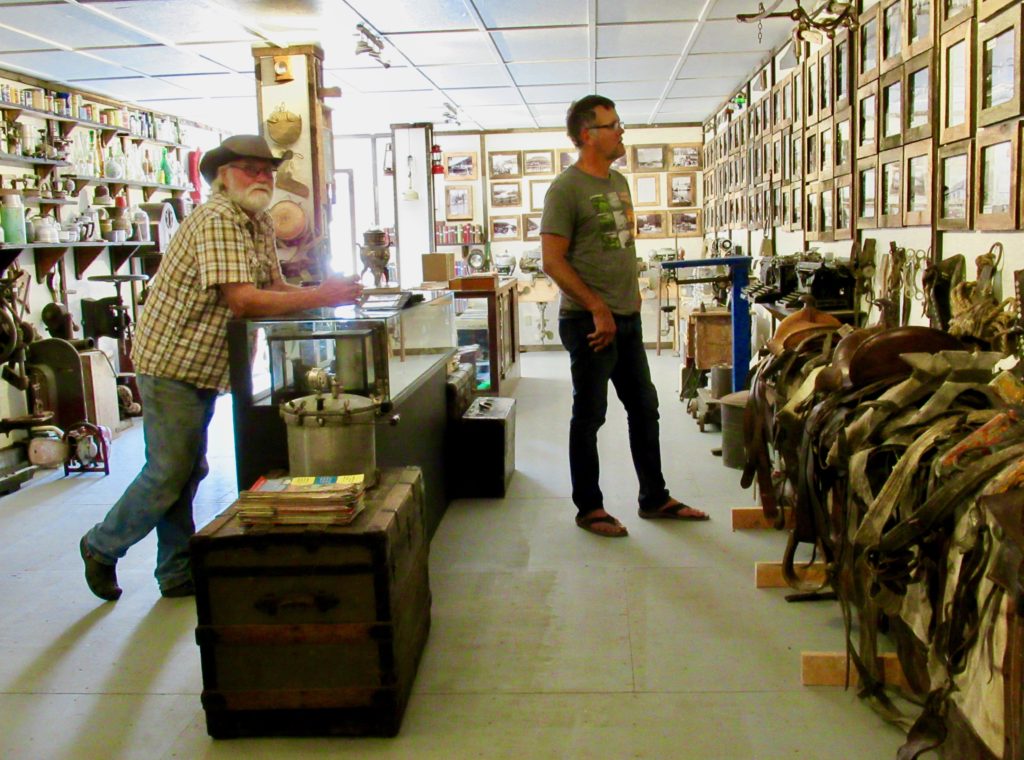
Obsidian is a black volcanic glass. It was a prize trade item as it could be flaked into deadly sharp points and tools. The nearby Mt. Edziza region was a good source for obsidian.
After chatting with Mickey some more – no online website or internet presence for the museum – we said our goodbyes and set out for a stroll.
Walking the Town
Passing the boy putting along on his quad several times, we wander into the immaculate interior of the Anglican church. A red runner leads up to the lace-draped altar; four dark wooden pews line each side.
The town has several old buildings that date back to the goldrush era. Some are abandoned; others have been restored. The original Hudson’s Bay Company store is now the Riversong Café, but strangely enough it was closed at 6:30 p.m. mid-week during a road closure!
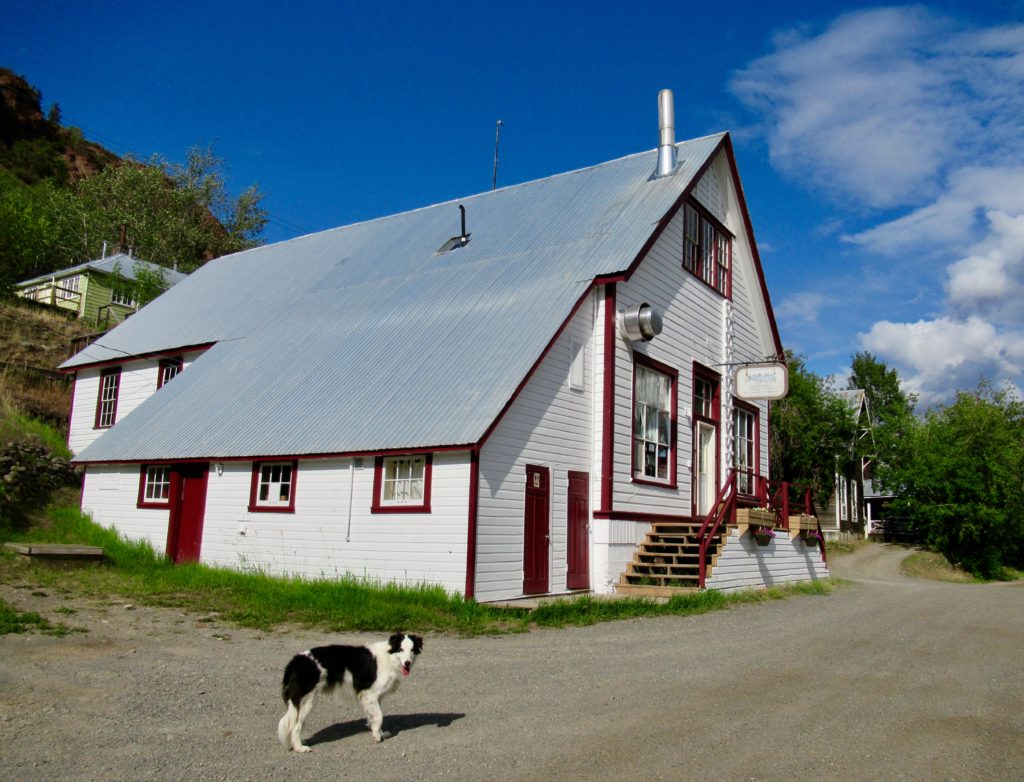
Crossing the creek, we walk up to the two, once grand homes on the hill above the museum. One is shrouded in trees. The other still has remnants of glass in its windows and a sagging power line.
One Last Stop
On the road again, we stop at the graveyard beside the generator station. Like the town below, it flows down the hilliside, new above, old below.
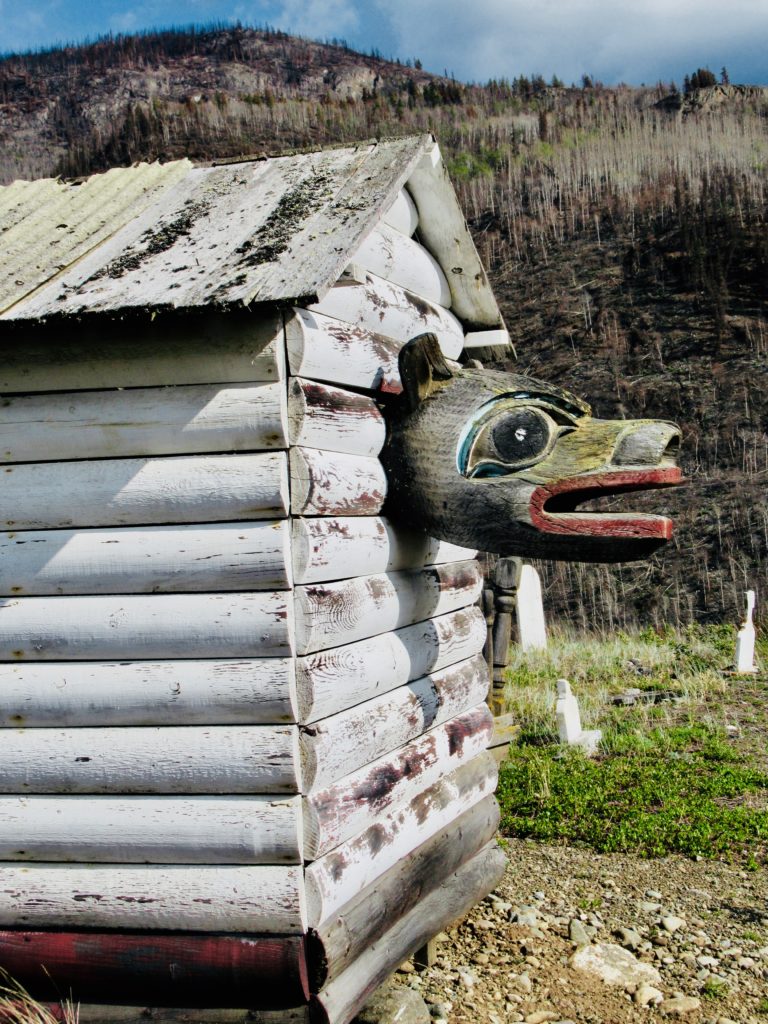
We stand and take in the tiny dot of a village, the fire-ravaged hillsides rising steeply off the Stikine, and the distant sun, sinking lower in the sky. Gazing at another headstone, I smile. It reads: In Memory of Honey Joe. Died October 21, 1942. Age 105.
Like the town of Telegraph Creek, Honey Joe must have seen it all – from prospectors to paddlewheelers, telegraph lines to bustling town, boom to bust. We thought we had an adventure, but compared to Honey Joe’s life, it was a mere drop in the bucket.
Resources:


Sure enjoyed your article. We own the grand old log cabin home in your very nice photograph above. Mickey’s wife is my wife’s cousin. The old store that Francis Gleason owned was built by my wife’s great-great grandfather. I just wrote an article about a few of our previous visits and our planned 2021 visit that didn’t happen. You can see it at https://www.davecottrell.com/trying-to-get-to-telegraph-creek-in-2021/. I included your photo of our “fixer-upper” and linked it to this page. I hope that is okay! It’s a great photo.
That’s wonderful Dave! Always happy to learn more information about pieces of the past! You are welcome to use my photo in your article (but please ask ahead of time for permission if there are any future images as I need to vet links).
Shouldn’t one get permission to post photographs of privately owned property? Just thought it was strange that the owner is asked to request permission.
Hello! As long as photos are taken from a public space – such as sidewalk or roadway – and there are no people in the photo and no signs restricting photography then it is my understanding that you do not need to request permission. There’s are good breakdown of Canadian photography laws here.
.
Thank you, Megan. It is a wonderful photo. It looks very different now. Most of the trees were cut by LDM and we had to remove the summer kitchen as we try to stabilize the structure for possible restoration.
Change happens – at least that moment in time was captured in the photo!